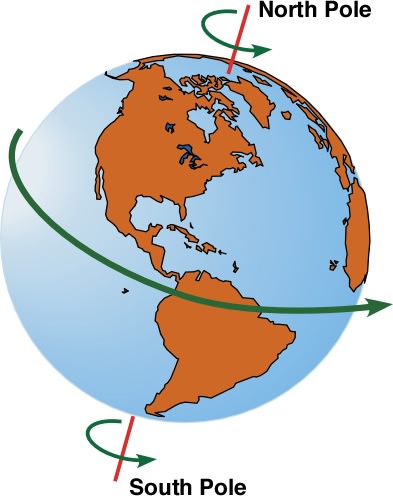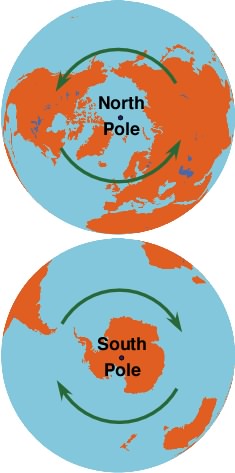Earth Rotation and Revolution
The term Earth rotation refers to the spinning of our planet on its axis. Because of rotation, the Earth's surface moves at the equator at a speed of about 467 m per second or slightly over 1675 km per hour. If you could look down at the Earth's North Pole from space you would notice that the direction of rotation is counter-clockwise (Figure 6h-1). The opposite is true if the Earth is viewed from the South Pole. One rotation takes exactly twenty-four hours and is called a mean solar day. The Earth’s rotation is responsible for the daily cycles of day and night. At any one moment in time, one half of the Earth is in sunlight, while the other half is in darkness. The edge dividing the daylight from night is called the circle of illumination. The Earth’s rotation also creates the apparent movement of the Sun across the horizon.



No comments:
Post a Comment